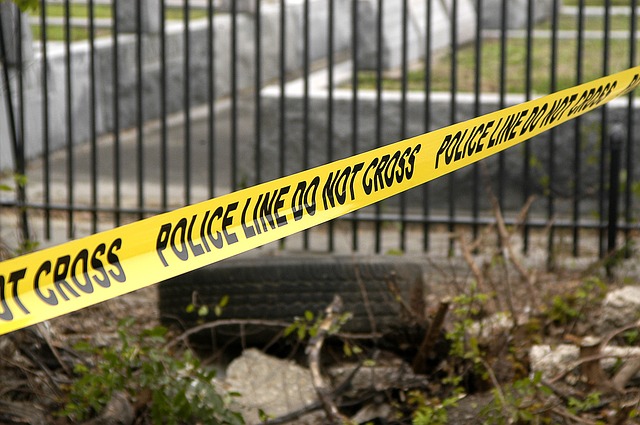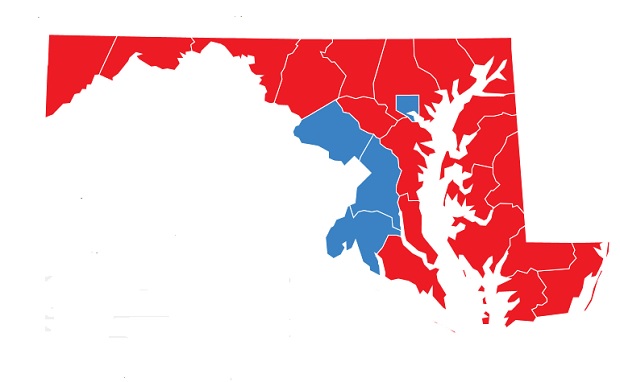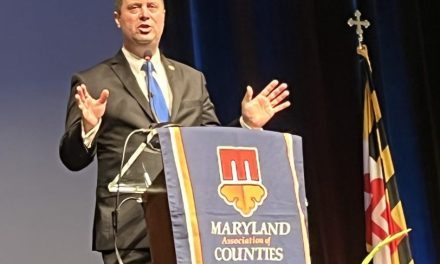If you’re like me, you watch one of the local Baltimore news stations when you’re putting on your jammies at the end of a long day. With luck and cool sheets, you’ll be asleep before you hear the lead stories about murder and mayhem in the big city.
Forget about all the wonderful and impressive things the people of Baltimore do every day. Crime is the lead story. No matter where you live in Maryland, if you watch the evening news on one of these stations, crime is the last thing you hear about the state’s greatest city. Likewise, it’s the first thing you hear in the morning if you get up watching the local news. And it’s been this way, not just recently, but for decades.
Understandably, Mayor Scott is spending a great deal of his time talking about crime and what his city government is going to do about it. His statements are weak and uninspiring – trite expressions of concern the people of Baltimore have been hearing from their elected leaders forever. Like his predecessors, his promises and programs will fail to have any widespread, enduring impact upon the plague, the awful rash of violence that just won’t go away. It’s “Groundhog Day” in the big city in which the residents and city’s businesses are trapped in a time and place where crime is the rule, never the exception.
He can’t ignore the problem of crime, but then he can’t do anything about it. He can’t solve the problem of crime because he, like the mayors who preceded him, is severely nearsighted. Unfortunately, this isn’t something glasses or contact lenses can fix. Mayor Scott’s problem isn’t physical, it’s political. He calculates his accomplishments in terms of what happens while he’s in office, with little or no concern for the long run.
For Mayor Scott, solving the problem of crime is primarily a matter of policing. But it’s not. Crime is a symptom of other, more profound conditions of the city, the repair of which will take years beyond his term in office. Among the root causes of crime, the most significant is the city’s chronic, multi-generational lack of all-inclusive economic development.
By “economic development,” I’m not talking about shiny real estate developments, most of them downtown, that are often more for the benefit of certain developers than for the roughly two-thirds of the city that struggles every day just to get by. These special interests may fund political campaigns, Mayor Scott’s included, but they are, with some notable exceptions, self-serving and do little to help the city from which they have benefited so greatly. Nor am I talking about major developments on the perimeter of the city such as Port Covington that will not ignite self-sustaining, all-inclusive economic development citywide. Who, precisely, is going to work there? Where do they live? Where are they going to spend their income?
Oh, he cares about his city, but so what? Baltimore needs nothing less than a huge, long-term plan to put self-sustaining economic development in the heart of the city’s neighborhoods that need it most. Smack dab in the communities whose local economies are a breeding ground and operational base for violence and other criminal activity. The sooner the better, but it all takes time. Even at a miraculous pace, success will be gradual. Crime will dissipate slowly. The rebirth of Baltimore isn’t going to happen until the Scott administration is history.
In the meantime, the city’s police can do their best to keep crime contained to certain areas of the city and away from others. But the police, however smart and heroic, are not the solution Mayor Scott wants them to be.
The city is in urgent need of all-inclusive neighborhood development that doesn’t displace, but employs. Development using carefully selected new generation industrial employment opportunities with robust on-the-job training for the city’s un- and under-employed who already live there. Development that creates jobs for people already living in specific neighborhoods, not for commuters whether they be from elsewhere in the city or the suburbs. With affordable, quality housing for existing residents, that enhances the greater community without upgrading it with urban immigrants who have no history or long-term family investment in Baltimore.
How does the Mayor accomplish all this? It all starts with him accepting his role as a leader who stoked, who ignited the self-sustaining neighborhood economic development that will be the foundation of a new future for his city, even if that horizon won’t be realized until well after his term in office. Otherwise, he remains just another Baltimore Mayor whose lack of vision and uninspired politics allowed the city to continue to suffer and decline.







Recent Comments